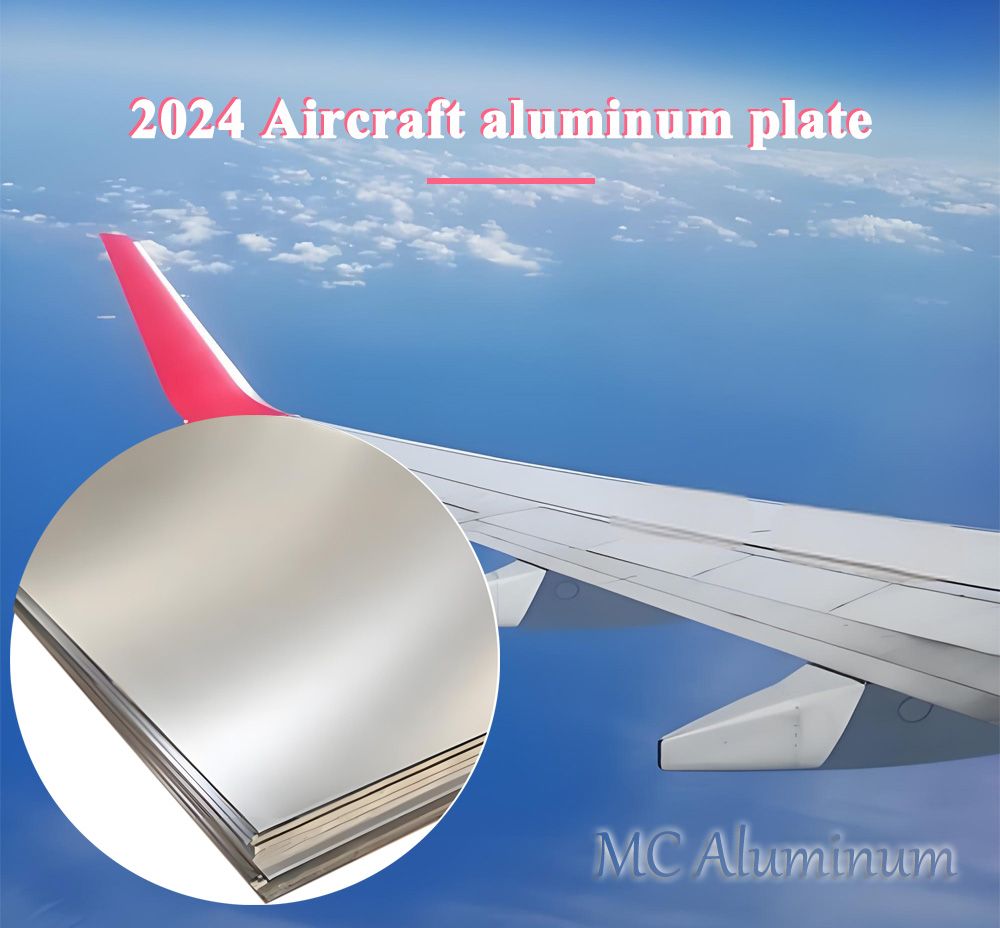Which Aluminum Alloy is Used for Aircraft Lower Wing Skin Panels?
Role of 2024-T351 Aluminum Plate in Aircraft Manufacturing
In the aerospace industry, material selection directly determines performance, safety, and cost-effectiveness. With continuous research and development, aluminum alloys have become the preferred materials for aircraft structures. Among them, 2024-T351 aluminum plate is widely used in aircraft manufacturing due to its high strength, excellent fatigue resistance, and stable machinability.
The lower wing skin panel is a critical structural component, as it bears lift and aerodynamic loads. This requires exceptional resistance to tensile stress, bending stress, and cyclic fatigue loads. With its high strength, fracture toughness, and machining performance, 2024-T351 is the ideal choice for this application.
What is 2024-T351 Aluminum Plate?
2024 aluminum alloy belongs to the Al-Cu-Mg (aluminum-copper-magnesium) system, also known as duralumin. It is one of the classic high-strength aerospace alloys, widely used in fuselage skins, wing spars, panels, and frames.
2024 alloy: High copper content, offering a combination of high strength and good fatigue resistance.
T351 temper: Solution heat-treated, stress-relieved by stretching, and naturally aged, giving the alloy both high strength and low residual stress, ensuring better dimensional stability during processing.
Advantages of 2024-T351 in Aircraft Lower Wing Panels
1. Lightweight structural design : Reduces wing weight, improving fuel efficiency and flight range.
2. High stiffness : Prevents excessive deformation of the wing surface during flight.
3. Superior fatigue resistance : Extends inspection intervals and reduces maintenance costs.
4. Safety assurance : Maintains strength and toughness even under extreme aerodynamic conditions.
2024 T351 Aerospace Aluminum Plate - Product Information
| Alloy | 2024 |
| Temper | T351 |
| Thickness range | 6 mm - 300 mm |
| Width range | 1000 mm - 3500 mm |
| Length | Fixed or customized |
| Tensile strength (σb) | ≥ 470 MPa |
| Yield strength (σ0.2) | ≥ 325 MPa |
| Elongation | 10 -15% |
| Elastic modulus | 73 GPa |
| Density | 2.78 g/cm³ |
| MOQ | 1-3 tons |
Why Choose 2024-T351 for Lower Wing Panels?
1. High specific strength : Tensile strength above 470 MPa with density only one-third of steel, ensuring a balance between lightweight design and high load-bearing capability.
2. Excellent fatigue performance : Withstands millions of flight cycles without crack propagation, greatly extending service life.
3. Good fracture toughness : Reduces the risk of catastrophic crack growth under complex loads, ensuring flight safety.
4. Stress relief and dimensional stability : T351 temper eliminates residual stress, minimizing deformation in large panels during machining and assembly.
5. Proven aerospace alloy : Meets international aerospace standards (AMS, ASTM, etc.) and is widely used in Boeing, Airbus, and military aircraft.

Applications of 2024-T351 Aircraft Aluminum Plate
1. Aircraft structures: Fuselage frames, ribs, and bulkheads.
2. Missiles and rockets: Casings, boosters, and high-stress structural parts.
3. Precision machinery: Key components in automation, medical devices, and semiconductor equipment requiring high accuracy and stability.
Comparison: 2024 vs. 7075 Aluminum Plate
In aerospace, 2024 and 7075 aluminum plates are often compared:
7075 aluminum (Al-Zn-Mg-Cu): One of the strongest commercial aluminum alloys, with tensile strength of 540–600 MPa, much higher than 2024. However, it has lower corrosion resistance and fatigue strength, making it more suitable for landing gear, spars, and high-load fittings where corrosion can be controlled.
2024-T351: Offers better fatigue strength, crack resistance, and long-term stability, making it more suitable for skins and panels subject to repeated cyclic stress.
In short:
2024-T351 : Best for fatigue-critical components like skins and wing panels.
7075 : Best for high-strength static load parts such as landing gear, joints, and bolts.
Thus, aircraft designers use 2024 and 7075 complementarily, selecting alloys based on specific structural requirements rather than as substitutes.







Contact Us